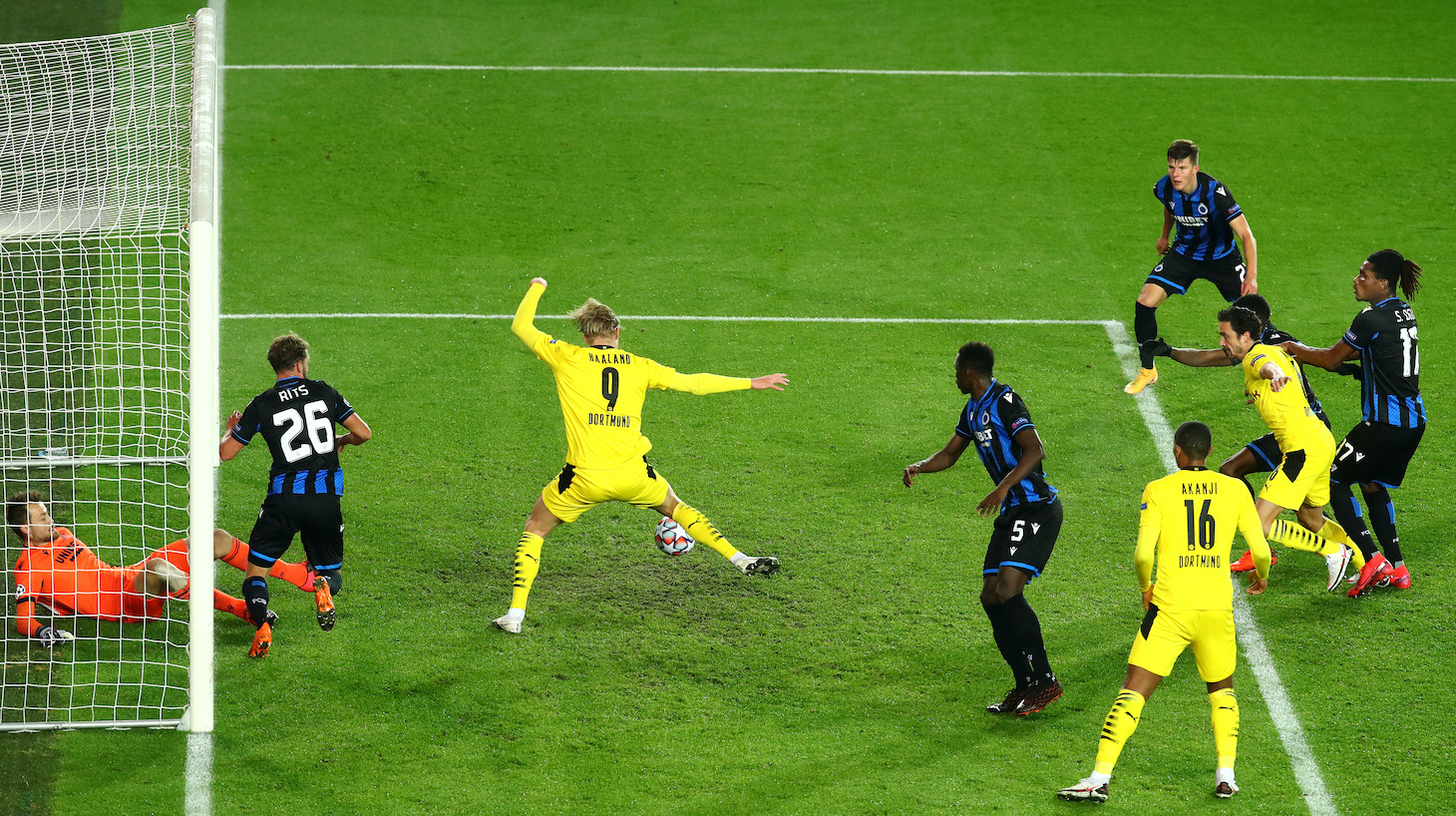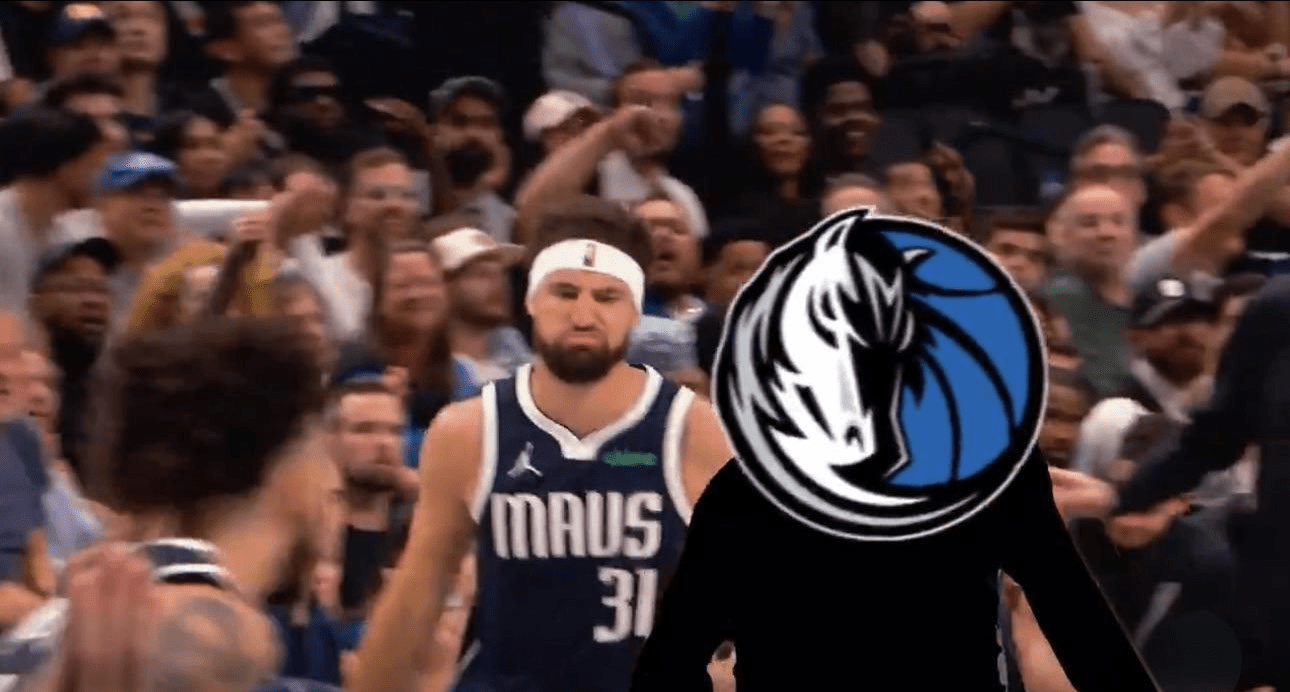Erling Haaland, Borussia Dortmund's 20-year-old Norwegian striker, is not only one of the most fearsome attacking weapons in the sport, he is also one of its most unique. Coming off an era where the best players tend to be those who touch the ball as much as possible, Haaland's style of domination is defined more by what he does without the ball than with it. Which, looking at his skill set, makes sense. When armed with the Hammer of Thor, it's best to save it for the big swings; no need to pull it out when hanging picture frames.
Club Brugge was Haaland's latest victim in Dortmund's 3–0 Champions League victory on Wednesday. Once again, the enormous Norwegian was his team's best player, scoring two goals and keeping the entire Brugge back line in a permanent state of terror during his 84 minutes on the pitch. Once again, Haaland did all that while touching the ball fewer times than any other Dortmund starter.
The highlight compilation above does a good job of summarizing why Haaland is so impossible to stop. Mostly it's because of his running off the ball. With his speed, power, strength, and irrepressible drive to sprint in behind, the striker completely conditions the opponent's defensive set-up no matter where Haaland or the ball happens to be.
You have to keep at least two defenders on him at all times, or else he will out-run or -muscle the one and kill you. Your defensive line can't push too far forward to condense Dortmund's space, or else he will race past the back line into acres of open grass and kill you. You can't sit the whole team too deep, or else Jadon Sancho, Gio Reyna, or another BVB attacker will knife through the clutter, hit a cutback to a waiting Haaland in the box, and he will kill you. With every movement—with even just the threat of movement—Haaland warps the other team's defense, making it easier for his teammates to play with time and space and to find him so that he can use some of his few touches to smash the ball into the net.
And Haaland does it all while hardly ever needing to get on the ball himself. Against Brugge, Haaland's 37 touches were the fewest on his team, even fewer than goalkeeper Roman Bürki. In Bundesliga play, the striker averages 32.3 touches per 90 minutes, with only Bürki averaging fewer on the team. (All stats via Football Reference.) Above Haaland with the third-fewest touches per 90 amongst BVB players who get regular playing time is Marco Reus with more than double, 64.8. This season Haaland has five goals in five Bundesliga matches, and four goals in three Champions League matches. Those are blistering numbers that prove one can completely dominate matches without having to dominate the ball itself.
The current paradigm of elite soccer is all about pressure—how a team presses its opponent and how it tries to escape the opponent's pressure. High defensive lines, maneuvering the ball in compact spaces under immediate harassment, suffocating counter attacks on one end while quickly initiating them on the other, taking advantage of open spaces at speed when space does appear—these are some of the scenarios commonly encountered in high-pressure matches, the scenarios teams that wish to thrive in the pressing game must master.
The paradigm of pressure demands slightly but noticeably different skill sets than did the previously dominant paradigm of possession. Possession teams traditionally want to assemble a squad of highly technical players and use all that technique to patiently ping the ball around and between a deep-lying defense until a pocket of space appears in which the possessors can shoot. Pressure, which arose in response to possession, is close to the opposite, prioritizing physicality and verticality, looking to smash the defensive lock rather than pick it.
The center forward position is one where the selection effects of the aforementioned paradigmatic styles can be seen most clearly. Strikers have always been mostly valued for their ability to score. However, as keeping possession became increasingly important, and because keeping possession is most effectively done when all 11 players on the pitch get involved in play, more and more top teams sought center forwards who were as gifted outside of the penalty box as they were inside it, looking more for Karim Benzemas than Gonzalo Higuaíns.
Haaland's ascent is evidence that things are beginning to change. Haaland isn't too good at hitting pretty through balls, and isn't particularly interested in dropping deep to play neat little one-twos with the midfield. Instead, Haaland always wants to be moving at full tilt toward the goal, battling with center backs for position and space, shunning all contact with the ball save those touches that set him up for a big, scything swing of his left leg.
Six or seven years ago those skills and proclivities would've made him a good player, but possibly not one who fit well with the prevailing elite systems of the day. Right now, those abilities are manna from heaven, making him a one-man pressure release valve, a devourer of open space at a time when open space abounds, a dominating presence uniquely positioned to thrive in today's game even and especially when the ball is nowhere near him. Because it is the Age of Pressure, it is also the Age of Haaland, and both are only just getting started.





